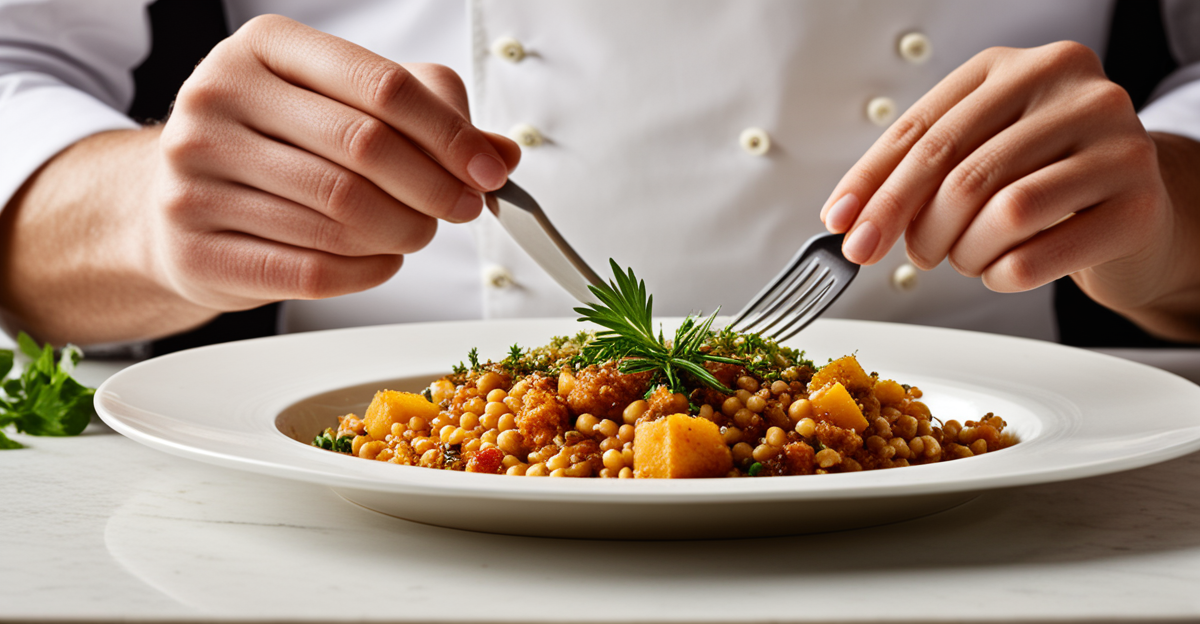Classic UK Culinary Heritage as a Foundation for Modern Inspiration
Traditional British dishes are characterized by their hearty, comforting qualities and reliance on locally sourced, simple ingredients. The UK culinary history reflects a tapestry woven from diverse regional customs and external influences, such as Roman, Norman, and colonial impacts. From Scotland’s smoked salmon to Cornwall’s pasties, regional diversity shapes British cuisine, offering rich textures and flavors unique to each area.
This heritage provides more than nostalgic value—it acts as a creative foundation for chefs seeking culinary inspiration. Heritage recipes are treasured not just for their taste but for the stories and cultural identity they carry. They serve as blueprints from which modern chefs innovate, using time-honored techniques to reinvent textures and flavors while maintaining the essence of traditional dishes.
Also read : What Innovative British Dishes Can Transform Your Travel Plans?
For example, the slow roasting of meats or the classic layering seen in a shepherd’s pie are techniques passed down through generations. Today’s chefs build on these methods, infusing contemporary sensibilities to enhance presentation or incorporate new ingredients, thereby ensuring the culinary legacy remains vibrant and relevant.
Understanding these defining characteristics and historical contexts of traditional UK dishes enables a deeper appreciation and more informed innovation within British cuisine.
Also to discover : What Are the Origins of Popular UK Dishes?
Iconic UK Dishes and Their Defining Elements
Iconic British food embodies simplicity, heartiness, and deep-rooted tradition. For instance, roast beef features prime cuts cooked to tender perfection, often accompanied by Yorkshire pudding—a local baking specialty enhancing the dish’s texture. The aromatic herbs and slow roasting technique highlight regional flavor profiles passed down through generations.
Shepherd’s pie utilizes minced lamb topped with creamy mashed potatoes, combining economical ingredients into a comforting, nourishing meal. The technique of layering ingredients ensures balanced richness, capturing both the rustic and refined elements of traditional British cooking.
No discussion of iconic UK dishes would be complete without mentioning fish and chips. This dish showcases fresh, locally sourced fish dipped in a light batter and fried until crisp, paired with chunky potatoes. The unique flavor stems from the quality of ingredients and the skill involved in frying to achieve a perfectly crispy exterior without greasiness.
These staples share common threads: reliance on unique ingredients native to their regions, traditional cooking techniques, and enduring cultural relevance. Their preparation methods have remained largely unchanged, yet their influence continues to inspire chefs aiming to preserve the taste and spirit of British culinary heritage.
Transforming Tradition: Modern Interpretations and Reinventions
Contemporary chefs in the UK are breathing new life into traditional British dishes through imaginative culinary reinterpretation. By blending classic flavors with global influences, they create exciting modern British cuisine that respects heritage while embracing innovation. For example, a traditional shepherd’s pie might be reimagined with exotic spices or gourmet ingredients, transforming its familiar appeal.
Chef innovation often involves experimenting with plating and presentation, elevating simple dishes into visually striking experiences. This echoes a trend where food is not only about taste but also aesthetic delight, appealing to increasingly sophisticated diners. Techniques such as sous vide cooking or molecular gastronomy are sometimes woven into classic recipes to enhance texture and flavor complexity.
Balancing respect for tradition with creative adaptation requires a deep understanding of the original dish’s essence. Successful reinterpretations maintain the soul of iconic British food while pushing culinary boundaries. This dynamic approach ensures traditional recipes remain relevant in a changing gastronomic landscape, attracting new audiences. By embracing both history and modernity, British cuisine continues to evolve, highlighting the versatility and enduring appeal of its culinary heritage.
Key Techniques and Ingredient Adaptations Bridging Old and New
Modern chefs harness innovative culinary techniques to revitalize traditional British dishes while respecting their roots. Methods such as sous vide precision cooking or controlled fermentation improve texture and flavor intensity without compromising authenticity. These techniques allow for a deeper exploration of classic flavors, enhancing the sensory experience in familiar recipes.
Ingredient substitution plays a crucial role in adapting dishes to today’s diverse dietary preferences and sustainability concerns. For example, plant-based proteins can replace lamb in a shepherd’s pie, preserving the dish’s layered composition and comfort factor while catering to vegetarian diets. Similarly, sourcing local and seasonal produce ensures freshness and supports regional identity—a cornerstone of UK culinary history.
Flavor innovation often involves blending traditional seasonings with unexpected components, introducing subtle new tastes that complement rather than overpower. This approach encourages chefs to balance honor for heritage with creativity, making age-old recipes appealing to contemporary palates. By combining refined culinary techniques with mindful ingredient adaptations, British cuisine thrives as a living tradition continuously evolving to meet modern expectations.
Classic UK Culinary Heritage as a Foundation for Modern Inspiration
Traditional British dishes share defining characteristics such as simplicity, heartiness, and reliance on seasonal, locally sourced ingredients. These elements reflect the rich UK culinary history, shaped by regional diversity and centuries of external influences—from Roman occupation to colonial trade. Each region contributed unique flavors and techniques, creating a mosaic of distinct cooking styles across Britain.
Heritage recipes play a pivotal role as a foundation for culinary inspiration. They offer more than nourishment; they embody cultural identity and historical narratives. By preserving original methods like slow roasting or hand-rolled pastry making, chefs gain reference points for innovation. These traditional recipes act as blueprints, enabling modern cooks to reinterpret classics while honoring their roots.
This fusion of history and creativity fuels evolving British cuisine. When chefs explore the essence of traditional dishes, they unlock opportunities to introduce new textures, ingredients, or presentation styles. Thus, traditional British dishes serve as a vital link connecting past culinary wisdom with contemporary experimentation, ensuring continued relevance and vibrancy in UK food culture.










